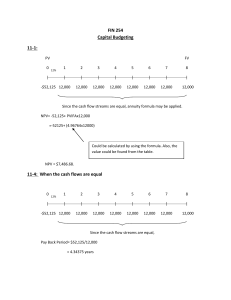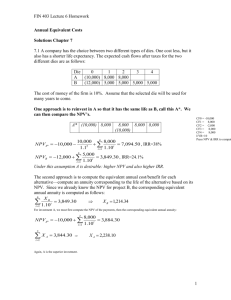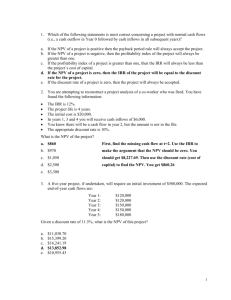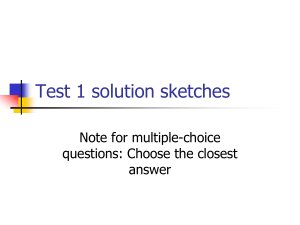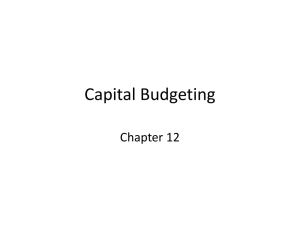NPV & IRR Problems with Solutions | Corporate Finance
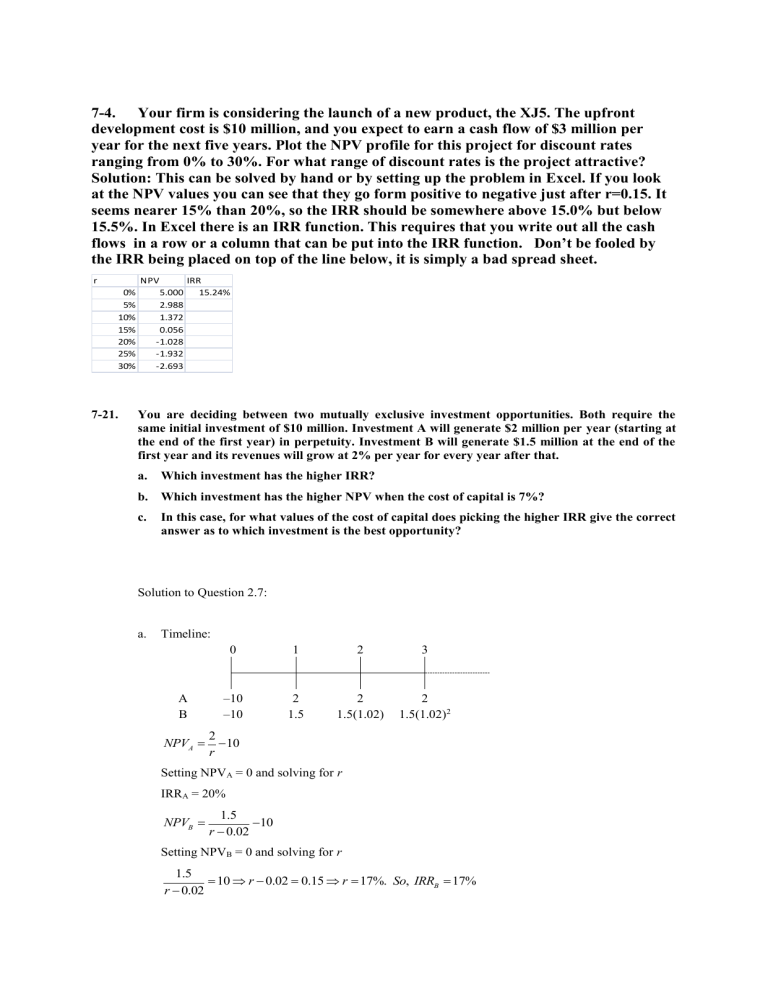
7-4. Your firm is considering the launch of a new product, the XJ5. The upfront development cost is $10 million, and you expect to earn a cash flow of $3 million per year for the next five years. Plot the NPV profile for this project for discount rates ranging from 0% to 30%. For what range of discount rates is the project attractive?
Solution: This can be solved by hand or by setting up the problem in Excel. If you look at the NPV values you can see that they go form positive to negative just after r=0.15. It seems nearer 15% than 20%, so the IRR should be somewhere above 15.0% but below
15.5%. In Excel there is an IRR function. This requires that you write out all the cash flows in a row or a column that can be put into the IRR function. Don’t be fooled by the IRR being placed on top of the line below, it is simply a bad spread sheet. r
0%
5%
NPV IRR
5.000
15.24%
2.988
10%
15%
20%
25%
30%
1.372
0.056
-1.028
-1.932
-2.693
7-21. You are deciding between two mutually exclusive investment opportunities. Both require the same initial investment of $10 million. Investment A will generate $2 million per year (starting at the end of the first year) in perpetuity. Investment B will generate $1.5 million at the end of the first year and its revenues will grow at 2% per year for every year after that. a. Which investment has the higher IRR? b. Which investment has the higher NPV when the cost of capital is 7%? c. In this case, for what values of the cost of capital does picking the higher IRR give the correct answer as to which investment is the best opportunity?
Solution to Question 2.7: a. Timeline:
A
B
0
–10
–10
1
2
1.5
2 3
2 2
1.5(1.02) 1.5(1.02) 2
NPV
A
2
10 r
Setting NPV
A
= 0 and solving for r
IRR
A
= 20%
NPV
B
r
1.5
0.02
10
Setting NPV
B
= 0 and solving for r r
1.5
0.02
10 r 0.02
0.15
17%. ,
B
17%
Based on the IRR, you always pick project A. b. Substituting r = 0.07 into the NPV formulas derived in part (a) gives
NPV
A
= $18.5714 million,
NPV
B
= $20 million.
So the NPV says take B. c. Here is a plot of the NPV of both projects as a function of the discount rate. The NPV rule selects
A (and so agrees with the IRR rule) for all discount rates to the right of the point where the curves cross.
NPV
A
NPV
B
2 r
2
r r
r
1.5
0.02
0.02
1.5
1.5
r
2 r
0.04
0.5
r
0.04
r
0.08
So the IRR rule will give the correct answer for discount rates greater than 8%


